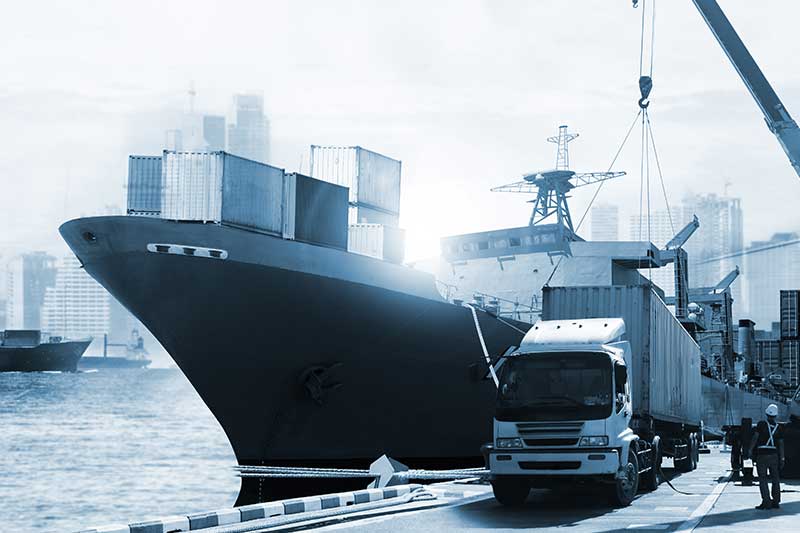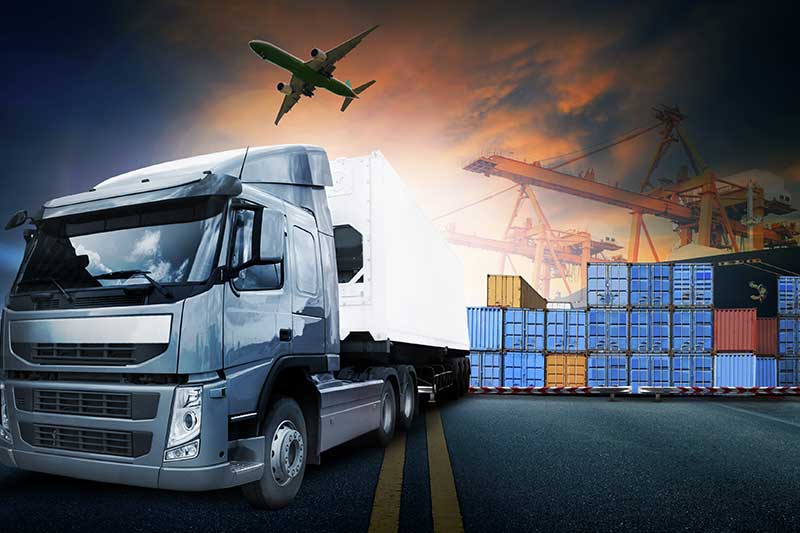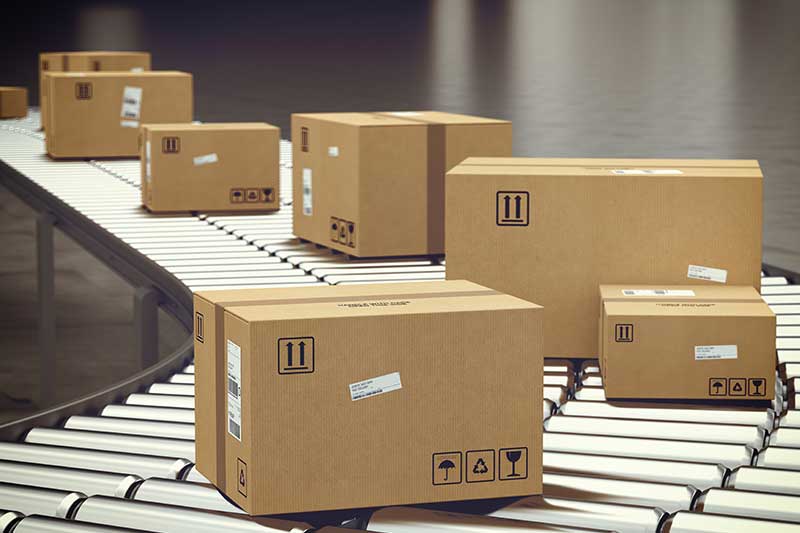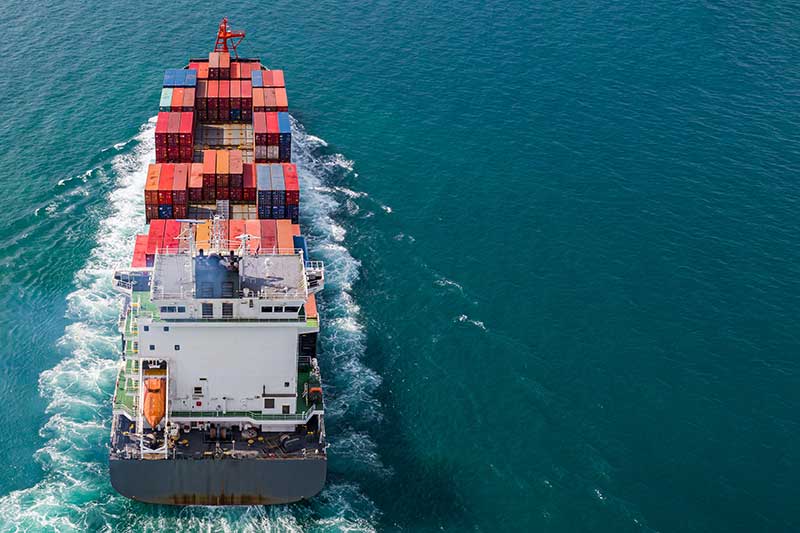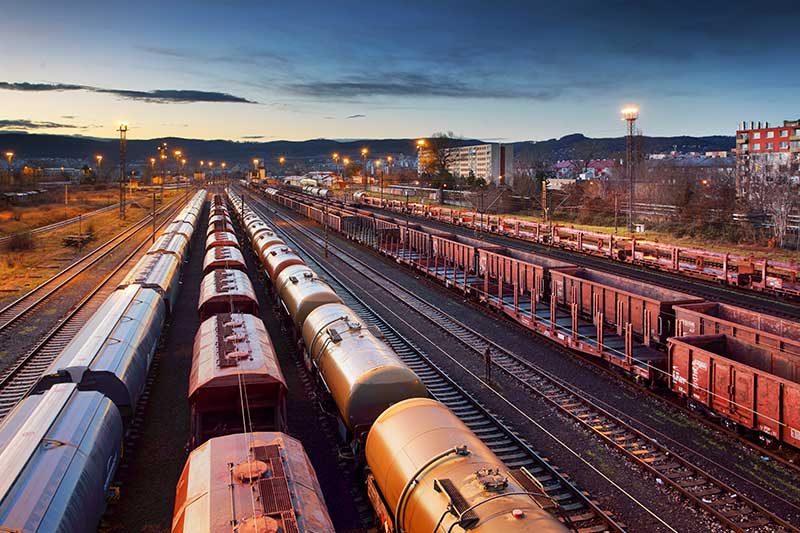Category: Shipping
Shipping Best Practices For A Seasonal Rush
Though we may not want to think about it quite yet, the holidays are nearly upon us. This means that, very soon, we will have to move on from back-to-school to the holiday shopping season, cyber Monday, Black Friday, and more. This can lead to some challenging shipping, warehousing, fulfillment, etc. issues. Fortunately, using shipping best practices (or a reliable logistics company) can make these challenges more manageable.
Here are a handful of tips to handling the seasonal rush.
Define Your Shipping Process
Part of this process of definition is to actually write things down. This will help to inform and assist volunteers and team members, during even the busiest periods, with fulfilling orders.
How is this done? For the next few orders you ship, pay close attention. If you have a fulfillment handling team, check with them. Write down each step and how long it takes to execute.
When all is written down, examine it closely. What can you do to create a more efficient process – cut back on time spent? Are there any bottlenecks?
Saving More Time
Once you’ve reviewed your process and cut wasted or unnecessary time, you can save time in other areas as well. For example, buy labels ahead of time and keep them in storage. Printing labels ahead of time is also doable if you know what the demand will be for specifically printed labels. Both printed and non-printed labels can be kept in bulk for future use.
Other Shipping Supplies
Of course, shipping supplies consist of more than just labels. So, when it comes to other supplies needed for shipping and order fulfilling, stock up on those as well to save time. Be sure to keep an accurate inventory of your shipping supplies. Not running out of something will help to eliminate costly, unnecessary delays.
Items here could pertain to printer ink, the aforementioned labels, express flat rate and priority mail packaging, and more. Do you have enough credit on your postage meter?
Setting Up a Strategy
You stocked up on supplies. You got your process all in place and defined. Now, what will your shipping charges consist of?
Below are some shipping/charge options. Determine which one, or combination, will best suit your needs:
- International shipping – This can be tricky. Just because you’re not involved in it now, doesn’t mean you won’t be in the future. As your business grows, your shipping demands may increase.
- Exact cost shipping – Whatever it’s going to cost you to ship the item, your customers will see it. That’s what they pay. If you get discounts, they’ll get discounts.
- Flat rate shipping – Here you will need to decide on a standard shipping rate that will do two things: a) cover most of your shipping costs and b) cover them most of the time. That is the rate you will charge everyone for everything.
- Free shipping – This is, of course, the most attractive shipping method for your customers. But is right for you? It can be pricey even with Shopify, Canada Post, DHL, UPS, and USPS discounts. You have to take a moment and make a very careful examination of long-distance shipping, shipping heavy items, rates, and profit margins before you offer this.
Of course, all of the above can be very nearly eliminated by partnering with STC Logistics. Even during the busiest of seasons, we can take the worry out of things like warehousing, inventory management, fulfillment, shipping, and so much more. You have enough to do, with manufacturing and running your company. Let us help you with the rest. Contact us today to find out more.
Understanding Temperature Controlled Freight Shipping
In the most basic terms, temperature controlled freight shipping means moving goods that are climate sensitive. For instance, you only want your chocolate melting in your mouth, your flowers blooming, and your produce fresh and tasty. From dock to dock, those items must be maintained in a stable temperature, and that requires special storage and handling.
Fortunately, with reefers (refrigerated trailers) and other refrigerated shipping methods in place, unaffected products are delivered every day. Let’s take a close look at temperature controlled freight shipping.
Freight Value and Temperature Sensitivity Prioritization
You must first identify critical shipping needs to have the most cost-effective and efficient logistics in place. As far as security requirements, speed, and temperature stability are concerned, not all items are equal. Figure out what’s perishable and what isn’t. Overall cost is most likely to be impacted with items over which temperature has an influence. Standard shipping options may well be appropriate for items that are less sensitive. For high-value items, a tailored logistics approach is advisable.
Limitations on Refrigerated Freight Packaging
There is less capacity in refrigerated freight trucks than in others. Truck space is reduced because of the insulated walls. This should have a direct reflection on your crating and packaging. Additionally, payload capacity is affected by the weight of the equipment used to control temperatures.
With the carrier of your products, be sure to address all temperature guidelines. Proper parameters are more likely to be used if you lay out all the specifics ahead of time.
Temperature controlled docks are also used to help secure items that are highly temperature sensitive. Additionally, to maintain the cold chain properly and reduce the alteration of inside trailer temperatures, drivers are advised to keep the doors closed until it’s absolutely necessary to open them.
The Best Packaging for the Job
Crating and packing, when done correctly, can protect your perishable items from humidity or extreme temperatures, even if they are exposed to harsh environments. To reduce heat transfer through the container walls of packaging, insulation is recommended. There are numerous types of insulation used in the shipping industry.
Dry ice and gel coolants are used for cool items that are considered temperature sensitive. Because of the leak potential and heaviness of wet ice, gel coolants are preferred over wet ice. If dry ice is being used for temperature control, some things must be provided. These are as follows:
- IATA compliant outer packaging labeling and markings
- Classification
- Correct identification
To absorb any liquids, it’s advisable to have paper towels, cellulose wadding, or pads under the shipment when shipping frozen items.
A Freight Service Provider That Is Trustworthy
When you join forces with a logistics partner such as a freight service provider, the following benefits can apply:
- LTL services that are temperature controlled covering much of North America and the United States
- Visibility to trace and track shipments
- A single point of contact for your company’s LTL and temperature controlled truckload shipments
- A wide array of business relationships
- Thorough beverage and food knowledge
When handling things like shipments that are temperature controlled, there are a lot of requirements to consider. To make sure your shipment is on the right track, you have to think about preparation, support, tools, etc. The specialists at STC Logistics can help. Contact us today to see how we can be of assistance where other logistics matters are concerned as well.
Tech Trends That Are Changing The Freight Shipping Industry
The latest advancements in technology and the logistics industry have not always had a close-knit relationship. Their reluctance or inability to capitalize on technology has cost the logistics industry in several ways including the following:
- slowed freight shipping times
- negatively affected efficiency
- trucking congestion
- problems in ports, and more
But to maximize security and efficiency and streamline processes involved in logistics, the industry will have to perk up, take notice, and get in the game. If they’re going to level the playing field between themselves and other businesses, there are a handful of new trends that should catch the eye and interest of every logistics CO and be a part of their future plans – and soon!
The Adoption of Blockchain
Blockchain is a technology that is often misunderstood but much-hyped. It’s already making an impact for those who have adopted it in the world of logistics. One logistics company, for instance, came up with the solution of blockchain to secure and streamline information exchanges between more than 90 organizations and companies involved in the activity of global shipping. Blockchain driven smart contracts are what the program is built upon. The program involves terminal and port operators, customs brokers, carriers, customs officials, and some freight forwarders.
Customer-Centricity
While catering to individuals, businesses, and companies with the need for shipping, the freight forwarding sector has traditionally been focused on process. But as more shipping services are needed by smaller businesses, and globalization takes hold, the need for freight forwarders and shipping services is forcing them to take an approach other than the conventional one. They now find themselves putting, at the forefront of modernization efforts, their customer’s perception.
As an example, customer service can be greatly enhanced through the use of digital solutions developing media marketing strategies, strategic content marketing, user-friendly websites, and the offer of instant shipping quotes.
Finding Solutions Through the “Internet of Things”
First things first, what is the Internet of Things? Here’s the easy answer: sometimes abbreviated as IoT, it includes all devices that are web-enabled and gather, forward, and act according to data collected from environments around them. To do this, they use communication hardware, processors, and embedded sensors.
If you control your household lights, locks, heat, etc. through your phone – you are using the Internet of Things.
This can be exceedingly useful where shipping data is concerned to track and analyze all things related to products and transport.
Real-Time Data – Use It
To ensure that your resources are used more efficiently, and to improve coordination and scheduling, real-time information should be utilized. Through data-sharing tools, this is currently being used in ports to monitor arrival and departure times, and more. The flow of cargo has been improved, thereby reducing port congestion. By planning and deploying equipment and labor, efficiency has been increased and the flow of cargo bettered.
Cybersecurity Must Be a Prime Focus
If you listen to the news or surf the net at all, you’re probably well aware of the problems some companies are facing with hackers and identity theft. Cybersecurity is a hot button today, and for good reason. A company’s infrastructure can be completely crippled by a cyber attack. Ports around the globe would be affected as well. Freight forwarders must adopt faster, more responsive digital solutions rather than sticking with the traditional processes they’ve always used. As companies implement brand-new systems, they must integrate cyber-security.
Confused yet? Contact us at STC Logistics and let us explain all of these trends in a manner that is more comprehendible and personally applicable to your particular situation.
When Should You Opt For Intermodal Transportation Solutions?
Many businesses consider shipping as a crucial part of their operations but not all are willing to spend as much in terms of shipping costs. This can be the reason behind why a lot of retailers and wholesalers shy away from the thought of using intermodal transportation solutions. Add to that, they think that the entire idea is complex, with the use of different modes of shipment in the process. The question is: when should you opt for this solution?
Plenty of Items Need to be Shipped within a Short Period of Time
If you have 10 or more shipments to make from one state to another, then you find out that the usual truckload rate covers only up to five of these shipments. What do you do? You cannot just sit down doing nothing about it. Here is where intermodal shipping comes in. The good thing about this is that you can get a quote and be surprised that the amount you will spend is less than what you expect. Add to that, the quote covers for all the shipments that you need to make in the next two days or so. All shipments will be out, by then, plus you will surely increase your margin.
You Want to Abide by Environment Regulation Codes
With everyone trying to make his or her fair share to save the environment, you will also want to save the planet by reducing the truckload freight that you are moving. Using intermodal transportation will be an easy solution to that. Trains can easily move a ton of shipment at a gallon of gas for 500 miles. With this option, you can optimize the route for your shipment, by decreasing the miles with which your freight will be on the road.
Caught between Full Truckload Shipping versus Less than Truckload (LTL) Shipping
A full truckload shipping is definitely cheaper than LTL shipping. There are instances though when you feel like a made-to-order product must be shipped using LTL. You may have regrets doing so. It is best to use intermodal shipping because it charges a minimal fee, which means you will pay a small amount in terms of daily charge until you are ready to ship everything that is inside the container. You will save more in the long run.
You Want to Avoid Congestion of Shipments on Usual Roads
Some people think that intermodal shipping can double transit times when compared to over-the-road facilities. This makes you back out of the opportunity to save more on this option. Remember that road transportation can also delay shipments given road congestion. Moving your freight to intermodal shipping will help you avoid this. There is also an online tracking system so that you can easily locate where your shipment is at the moment.
With all scenarios presented above, you will surely be convinced to give intermodal shipping a try. Of course, you would want to consider hiring a team to help you put these goals into reality. An experienced logistics company like STC Logistics can help you with that. We are known for transporting shipments locally and internationally, at extremely competitive rates.
How Should Online Retailers Develop Their Shipping Strategies?
Have you ever encountered this scenario? A new customer chances upon your website after finding a product he or she likes while browsing the Internet. He or she clicks on the link and sees that your price is much better than other competitors. From there, he or she clicks the button that says “Add to Cart”. After hitting the “Checkout” button, however, he or she realizes that there are additional shipping and handling fees. Some would continue with the purchase, while others may leave and search for a cheaper alternative. How can you make sure that a customer will stick to your online store then? Develop your shipping strategies further. How do you do that?
Why Not Offer Free Shipping?
Consumers will surely love seeing the words ‘Free Shipping’ when visiting your website. This is applicable to domestic orders. This may mean that you need to handle the shipping fee by yourself, affecting your profit a bit. The best way to make this work, though, is to raise the price of your product, setting it at a level that is as competitive as those offered by others. Another is to offer free shipping with a minimum order amount. This way, you can attract customers to continue doing business with you, and at the same time enjoy more dollar profits, which can later be used to offset shipping cost.
Which strategy will work for free shipping? The answer will depend on how much you want to gain from the sale, and which niche your business is operating in. If you feel that neither of these strategies will work for your business, the next best thing to do is consider another strategy.
Charge Shipping Rates Accordingly
Some retailers would think how much they can make with the shipping fees that they charge their consumers. If you want to be different from others, you need to get rid of this mindset. It is crucial to charge shipping fees in an amount equal to what the logistics company will charge you. It does not matter if you are delivering the goods locally, or you need global transportation to get products to your consumers. There may be instances when there will be a slight discrepancy as to how much you are charging your clients and how much you will actually pay the logistics company.
Stick to Charging Flat Fees
Parcels come in different weights, shapes, and sizes. If you are considering this when shipping goods to your customers, then imposing a flat fee will be ideal. This strategy, however, requires some careful planning, making sure you have computed the average amount that you are usually charged for shipping a package to its destination. This will work so that your customers will not spend less or more for goods that they buy online.
There is a lot to consider when shipping packages to your customers, either locally or internationally. Even when you already have these strategies in mind, nothing beats hiring an experienced logistics company who can do the job for you. At STC Logistics, we always ensure that our clients are charged reasonably for shipments they make, whether at a domestic or global scale.
What You Need To Know About Full Truckload Shipping
Today’s world of shipping is far more complex than it used to be. The onslaught of digital age information can be too much to handle sometimes, making shippers feel overloaded and overwhelmed. Shippers with too much on their mind can find the optimization of their time, the reduction of risk, and cost saving difficult to think about or deal with.
One method of saving money and time is full truckload shipping. LTL (less than truckload) shipping increases costs and creates inefficiencies. On the other hand, when you fill a truck to near capacity, efficiency and savings are unlocked. For optimal outcomes, this is an important factor in transport management.
What Is FT Shipping (Full Truckload Shipping)?
When, for a given shipment, a truck is fully used/loaded with cargo, this method of shipping is referred to as full truckload. This reference to “a full truckload” can also incorporate the use of other truck/vehicle descriptions including the following:
- Intermodal
- Refrigerated
- Flatbed
- Backhauls
- Dry van
- Possibly partial truckload
Shipping rates for full load transportation, depending on the type of truckload, can vary. Overall, however, there are several common maximum limit classifications. These are as follows:
- Shipping 2500 ft.³ of product
- Accommodating 48 standard pallets
- Shipping 44,000 pounds of product
If space for more than 10 pallets is required, or if more than 15,000 pounds of freight will be shipped, the best option is often full truckload shipments.
FT Shipping Benefits
The biggest benefits to full truckload shipments are as follows:
- Better shipping rates
- Fewer risks
- Faster transit times
FT Shipping Can Present Challenges
Though full truckload shipping can be the best method of product transport, it does not come without its challenges. These can include the following:
- Higher-than-other-mode rates
- Problems procuring full truckload availability
- Having to accept rigid shipping and delivery schedules
- The need to pack merchandise better
Of course, where there is a problem, there is often a solution. Shippers can use a few best practices to try and overcome these challenges. These can include the following:
FT shipping should be used when…
- the weight of the cargo makes FT shipping more cost-effective than would the LTL method.
- the cargo is time sensitive.
- the manufacturer/seller wants an entire truck dedicated to their shipment.
- there are enough items available to fill the whole truck.
The Full Truckload Future
It is relatively uncertain where full truckload transporting is headed. Available capacity may one day be an FT shipping problem and is currently a major talking point among freight and transportation industry officials. The future of FT freight may also be impacted by the rising rates of LTL, limited truck capacity, and other rising transportation mode costs/rates.
To ensure cost effective, timely freight delivery, some shippers are nervously using as many modes of transportation as possible to overcome Mother Nature (during winter snowstorms, hurricane seasons, etc.), the ELD (electronic logging device) mandate, and more. This might translate into a demand for fuller trucks more often. However, railway and other innovative alternate modes may also be in high demand and take a lesson from FT shipping (all cargo holding containers/vessels full at all times).
Making the most of the best practice methods of shipping, STC Logistics knows the ins and outs of transborder shipping, global transportation, domestic transportation, and more. We are, in fact, completely familiar with all things logistically related in today’s high-tech world. Contact us today for more information.
Do You Meet These International Shipping Crate Requirements?
With the rise of e-commerce, more and more products are shipped to international destinations. If you are planning to join the global shipping frenzy, it is important that you first learn how to prepare an international shipment. Oftentimes, this form of shipping has more requirements to fulfill and regulations to meet than just placing products in shipping crates and boxes. As each import and export country has their own unique set of international shipping crate requirements, customs regulations, and government requirements, it pays to be familiar with them. This way, you can continue doing business confidently in this global economy.
Height and Weight of Shipment
When it comes to shipping crates and pallet containers, there are various restrictions on their height and weight. For example, the standard size of pallets in the United States is 48″ x 40″ x 6″. In addition, the height of these pallets should not exceed 60 inches or five feet. Another rule that business owners need to know is Less than Container Load. They indicate that the skids on pallets must fit into a multi-model or forty-foot standard ocean freight container. If the pallets do not meet these basic requirements, the shipment may be returned or get stuck on the dock.
In some cases, one’s shipment may also require prior approval permit from the shipping company. Common factors tend to include:
- The height of the skids exceeds seventy inches
- The skid has an excess length of one hundred nineteen inches
- The skid has an excess width of eighty inches
- The weight of the skid exceeds the twenty-two hundred pound or one-thousand kilo limit
The Bug Stamp
Countries that are under the International Plant Protection Convention (IPPC) will only accept wooden supply and packing materials that bear the Bug Stamp. Some of these items include dunnages, cases, pallets, crates, and drums. The purpose of these rules is to prevent the potential spread of various diseases and pests that often originate from plant-based materials.
Documentation
Businesses must prepare the documents for their international shipping crates as accurately as possible. The slightest error may lead to costly delays for both you and your customers. Below are several documents that are generally required for shipping:
- Export licenses (only if applicable)
- Export packing lists
- Dock receipts
- Warehouse receipts
- Certificates of insurance
- Certificates of origin
- Destination control statements
- Inspection certifications
- Consular invoices
- Commercial invoices
- Bills of Lading
Customs
Rejected shipments may affect the reputation of your business. Although occasional delays (due to fluctuating factors such as weather) are generally acceptable, your customers may start looking for another supplier once the grace period is over. So, before you send the shipment to the customs, it is important to determine if the customer is based in an embargoed country or is a restricted trading party. In addition, you may want to ensure that you are not shipping any prohibited or restricted commodities.
As you can see, there is plenty to consider when shipping crates internationally: paperwork, packing materials, height, and weight. If you are looking to work with an experienced logistics company, you have come to the right place! At STC Logistics, our team works tirelessly to ensure that our clients’ shipments are transported smoothly on the global stage.
Effective Ways To Avoid Holiday Shipping Delays
Before you know it, the holidays will be upon us. Ordinarily, that would be good news for e-commerce merchants. In the United States, in the last two months of the year, small to midsized retailers can see an increase of as much as 40% of their total annual revenue. That is, unless dreaded but avoidable holiday shipping delays thwart their efforts.
This year, sales for Christmas and similar holidays are thought to be in excess of $1 trillion. Merchants who don’t step up their game and concentrate on order fulfillment/shipping are going to suffer – possibly irreparably. To avoid holiday delays this year, take a look at the following tips and consider an order fulfillment provider.
Avoiding Shipping Delays for the Holiday Season
Consider all of the following in order to avoid as many holiday shipping delays as possible:
- Holiday challenges – One of the biggest challenges of the holidays is getting an order to the buyer on time. Customer satisfaction decreases if an order is late. Be sure that you have enough manpower for the holidays.
- Inventory – In addition to enough manpower, you’re going to need to make sure you have enough inventory to support all the orders that come in.
- Data correctness – This can apply to lots of data, but a correct address is one of the most important pieces of data where deliveries are concerned. (Make sure address labels are legible.)
- Couriers – Be entirely familiar with your courier’s cut off times.
- China – With all of the products that are manufactured in China today, one important aspect to keep in mind is that China has their very own holidays during which they will not ship out or manufacture goods.
Could You Use an Order Fulfillment Provider?
As the holidays roll around, it can make a big difference, where delivery delays are concerned, if you have chosen a reliable order fulfillment provider. These services have arrangements with couriers. Well in advance, they get notified about potential issues such as cut off times, technical problems, or limited capacity. So that you can focus your efforts, time, and attention on driving sales, your order fulfillment provider can make suitable arrangements if need be and do any communicating that might be necessary.
Fulfillment providers do the following:
- Take care of your storage
- As soon as they come in, pick and pack your orders
- Use software that is integrated with your e-commerce platform and fully automated
What if there isn’t sufficient storage space for your products? Your order fulfillment provider, through either ownership or partnerships, will find warehouses or alternative storage. So that you can avoid unnecessary delays, they will also let you know when your inventory needs to be restocked. Businesses that deal with order fulfillment understand what to be aware of to avoid delays, which policies or tariffs apply to regions or countries, and what delivery method works best for each individual region.
The specialization of order fulfillment providers encompasses everything that goes on from receiving an order in the very beginning to the end of the process, including physical delivery of your product.
STC Logistics is not only an invaluable tool for today’s e-commerce merchant but a good friend to have in this competitive industry. Our experts can assist you with rollouts and distributions, installations, packing and crating, warehousing and fulfillment, technology, and domestic, global, and transborder transportation. Call us today at 1-800-547-4324 to find out more.
Avoid These Pitfalls When Shipping By Barge
Though shipping by barge seems safe, and (in many cases) is relatively unavoidable, it has its pitfalls. By taking a close look at the aspects of barge shipping, you may gain a better understanding of the process itself and why certain pitfalls exist.
When people see barges, because they’re looking at them from land, they usually see them being towed out by a tug. To most individuals, it’s just one more method of sea transport. It seems simple and low risk. Unfortunately, that’s not necessarily true.
Why Is Barge Shipment So Popular?
Depending on what area you’re in, shipments by barge are not only popular but extremely common. This is particularly applicable in the region of the Asia-Pacific. Accessibility is one big advantage. They can access locations where larger vessels may have a problem. They’re also a relatively inexpensive mode of transport. Again, compared to large oceangoing vessels, they are cheaper to maintain and operate. An additional benefit includes versatility – though in smaller quantities, they can transfer a large variety of cargo.
Common Types And Causes Of Losses
As mentioned earlier, barge shipment is not without its risks. Let’s examine some of the problems that have arisen in the past, and their causes:
Most common problem – The most frequent issue where barges and tugs are concerned is foundering and stranding. The cause of this problem can be a number of factors combined or one factor by itself. These can include the following:
- Outdated navigation charts
- Tow gear failure, such as an old towline
- Underpowered tug
- Engine failure
Also possibly the result of the above causes of stranding or foundering can be capsizing. This can also be caused when there is structure failure or stability is compromised by inadequate securing and/or stowing of cargo.
Vehicle collision – Sadly, this is a common incident and involves other vessels as well as the vessel carrying cargo. Causes of this can include the following:
- Defective navigation aids
- Inadequate display of shapes and lights by barge or tug
- Poor navigation or watch keeping
- Crew negligence
Other causes of loss include losses due to fires and piracy or hijacking. See below for details.
Fire losses are typically caused by the following:
- Nature of cargo
- Poorly maintained or inadequate firefighting equipment
- Crew negligence
- Unsafe practices
- Poor housekeeping
Hijacking or piracy is possibly caused by the following:
- No or little anti-piracy measures
- Poor voyage planning
- Poor watch keeping
How to Avoid Barge Shipment Problems
The following are requests that should be made to avoid the most common problems that arise with shipment by barge. Ask for these:
- Vessel to wage and suitability approval survey
- Intended route details and voyage plan
- Crew experienced in carrying special cargo
- Tow configuration
- Certification of crew, barge, and tug
- Barge and tug specifications
Troubled Waters
Keep in mind that some barges and tugs display high risk characteristics right off the bat.
- If a barge or tug is classed by a society that is a non-IACS member or is unclassed, there’s trouble.
- Vessels that are over-aged, not operated to standards, and/or not maintained could lead to structural failure or a loss of propulsion.
- If, to tow the barge, the tug does not have at least the minimum power required, problems will ensue.
Additional characteristics can include the following:
- Vessel flagged in PSC blacklisted or little-known flags
- Operators/owners with poor reputation
- No or little PSC (Port State Control) Inspections history
If you would like assistance with your domestic, global, or transborder transportation, there are few better sources to turn to than the specialists at STC Logistics. Contact us today if you would like to find out more.
A Quick Look At The Future Of Rail Shipping
Due to major shifts in the logistics industry, there is an increased need to employ more advanced modes of transportation. In addition to that, the aging generation of drivers, noxious gas emissions, and the rising demand for capacity are other problems that logistics professionals face. Fortunately, there is a solution: rail shipping.
While this type of freight transportation experienced downtime since the 1980s, it is making a major comeback these days. Today, railroads account for the movement of approximately 40 percent of American freight. Rail shipping is therefore critical to the U.S. economy, connecting businesses across the country as well as contributing billions of dollars annually.
If you are new to rail shipping, this post is perfect for you. Read on to find out what it is and how it affects the logistics industry.
What is Rail Shipping?
Rail freight transportation is a way businesses utilize to ship goods from one location to another. This method often involves different types of vehicles to transport the goods. For example, a railway carriage and rail transport system will work in tandem to transport one’s cargo. Rail shipping has been around for many years and is part of the global logistics chain. Because of its cost-effectiveness and fuel efficiency, rail shipping is considered an eco-friendly mode of transportation. Although rail shipping is a capital-intensive means of mechanized ground transportation, it has helped many countries increase economic growth and drive international trade.
With that said, below is a further look at how rail shipping can help resolve common logistics industry challenges:
A Reliable Method for Reducing Harmful Emissions
One of the biggest advantages of rail shipping is how environment-friendly it is. This form of freight transportation can handle a significantly higher volume of freight and travels a more solid route than other options. Due to faster transit times and the power of automation, rail shipping causes fewer carbon emissions over the long term.
More Room for Automation
New technology innovations in the rail shipping industry are at their peak of development. AI (artificial intelligence), IoT, Big Data, driver-less trains, and automation are some of these innovations impacting the industry. For example, automated Positive Train Control (PTC) systems are already implemented on over 80 percent of mandatory Class I route miles nationwide. In fact, they should be fully active by 2020. All of these efforts are helping eliminate human errors and labor.
Enhanced Safety
Because PTC systems are designed to automatically stop or slow down a train in case of human error or potential accidents, they have helped enhance safety (less human involvement) as well as eliminate highway congestion. The Association of American Railroads has reported that the rate of accidents on railroads has decreased by over 20 percent since 1980.
It is safe to say that rail shipping can be a great logistics solution for any business in the near future. The shipping method is constantly evolving and becoming one of the most efficient and eco-friendly modes of freight transportation.
